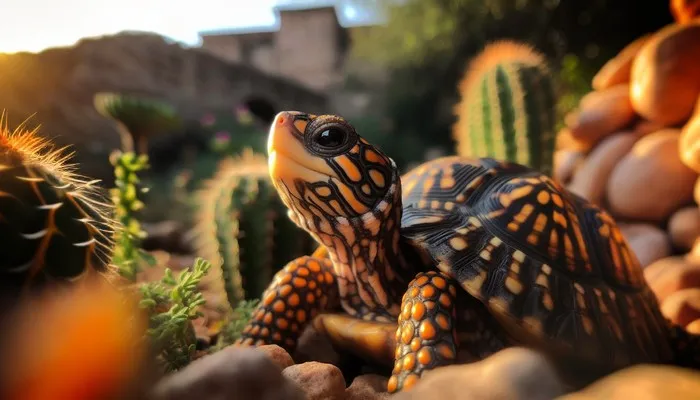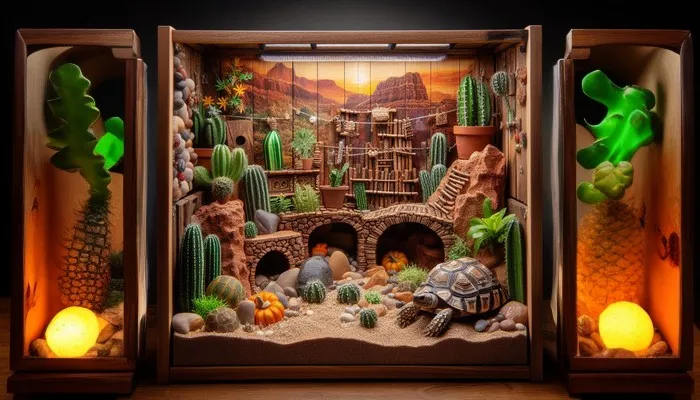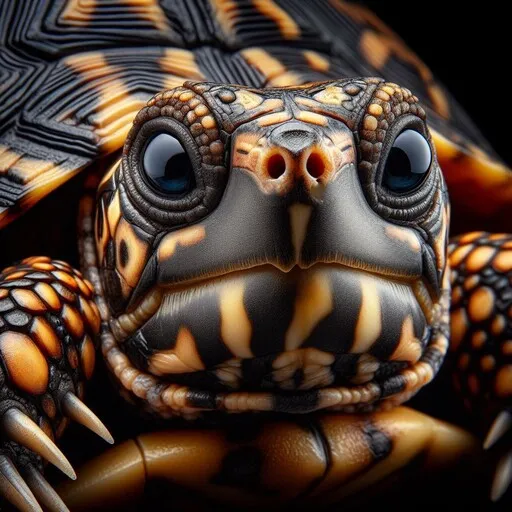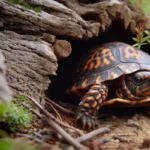Welcome to the amazing world of Mexican Box Turtle!
These captivating creatures are full of surprises and have unique characteristics that set them apart from other turtles.
In this article, we’ll explore their distinctive features, behavior, and habitat, as well as provide tips for pet owners and discuss conservation efforts.
Let’s dive in!
Discovering the Mexican Box Turtle

Species Overview: A Look at Terrapene mexicana
Mexican Box Turtles, scientifically known as Terrapene mexicana, are a species of box turtle native to Mexico.
They’re primarily found in the northeastern and central parts of the country.
There are two recognized subspecies: the Coahuilan Box Turtle (Terrapene coahuila) and the Yucatán Box Turtle (Terrapene yucatana).
Distinctive Features: What Sets Mexican Box Turtles Apart
These turtles have a few unique features that make them stand out from other species.
They have a high-domed, oval-shaped shell with a hinged plastron (the bottom part of the shell) that allows them to completely close up when threatened.
Their coloration ranges from dark brown to black, with yellow or orange markings on their shells and limbs.
Males typically have a slightly concave plastron, while females have a flat one.
The Mexican Box Turtle’s Habitat: Where They Thrive
Mexican Box Turtles prefer living in humid, tropical environments such as forests, grasslands, and marshes.
They’re usually found near water sources like rivers, ponds, or streams.
These turtles are primarily terrestrial, but they’re also known to be good swimmers and can often be found soaking in shallow water to stay hydrated and regulate their body temperature.
Behavior and Lifestyle

Social Interactions: Communication Methods
These turtles are generally solitary creatures, but they do interact with each other during mating season.
Their means of communication are a combination of chemical signals, such as pheromones, and visual cues, like head bobbing and shell tapping.
Males will often engage in aggressive behavior towards other males during the breeding season to establish dominance and secure a mate.
Feeding Habits: Their Diet
Mexican Box Turtles are omnivorous, meaning they eat both plant and animal matter.
Their diet includes a variety of insects, worms, snails, fruits, and vegetation.
In captivity, it’s essential to provide a balanced diet that includes both protein sources and fresh fruits and vegetables.
Survival Strategies: Staying Safe
These turtles have developed several strategies to stay safe from predators.
Their primary defense mechanism is their hinged plastron, which allows them to close up tightly, protecting their soft body parts from harm.
They also rely on their cryptic coloration to blend in with their surroundings and avoid detection.
When threatened, they may also release a foul-smelling musk to deter predators.
Caring for a Mexican Box Turtle as a Pet

Creating the Ideal Habitat: Setting Up a Home
If you’re considering a Mexican Box Turtle as a pet, it’s crucial to provide a suitable habitat that mimics their natural environment.
Here are some tips to help you set up a comfortable home for your turtle:
- Choose a large, sturdy enclosure with plenty of space for your turtle to roam and explore.
- Provide a mix of substrate materials, such as coconut coir, cypress mulch, and sphagnum moss, to retain humidity and allow for burrowing.
- Include a shallow water dish for soaking and drinking, as well as a hiding spot, like a hollow log or a cave.
- Maintain a temperature gradient with a basking area of around 90°F (32°C) and a cooler area of about 70-75°F (21-24°C).
- Provide UVB lighting to help your turtle synthesize vitamin D3, which is essential for calcium absorption and overall health.
Feeding: A Nutritious Diet
As mentioned earlier, Mexican Box Turtles are omnivores and require a varied diet.
Here are some suggestions for feeding your pet turtle:
- Offer a mix of protein sources, such as insects (crickets, mealworms, or earthworms), cooked lean meats, and low-fat wet dog or cat food.
- Include fresh fruits and vegetables, like leafy greens, berries, and melon, in their diet.
- Supplement their diet with calcium and vitamin supplements to ensure proper nutrition.
- Feed your turtle every other day, adjusting the portion size according to their age and size.
Health and Wellness: Ensuring Good Health
Regular check-ups with a reptile-savvy veterinarian are essential for maintaining your turtle’s health.
Be vigilant for indications of sickness, like lethargy, reduced appetite, or atypical behavior.
Common health issues in Mexican Box Turtles include respiratory infections, shell rot, and parasites.
Early detection and treatment are crucial for a successful recovery.
Conservation Efforts
Threats to Their Population

Regrettably, Mexican Box Turtles encounter numerous challenges in their natural environment, such as habitat destruction from deforestation and farming, contamination, and unlawful capture for the pet market.
Additionally, climate change presents a considerable threat, as it modifies their native habitats and impacts their food supply.
Current Conservation Initiatives
Conservation groups and governmental bodies are collaborating to safeguard Mexican Box Turtles and their environments.
Initiatives encompass habitat rehabilitation, research and surveillance projects, and captive breeding schemes to bolster wild populations.
Educational and awareness-raising campaigns hold a vital function in advancing the protection of these turtles and their ecosystems.
How You Can Help: Supporting Conservation
There are several ways you can contribute to the conservation of Mexican Box Turtles:
- Support organizations and initiatives dedicated to turtle conservation, either through donations or volunteer work.
- Choose a captive-bred turtle as a pet instead of one taken from the wild.
- Spread awareness about the threats these turtles face and the importance of conservation efforts.
- Practice responsible pet ownership by providing proper care and not releasing captive turtles into the wild.
Fun Facts and Trivia
Interesting Tidbits: Did You Know?

- Mexican Box Turtles can live for more than 30 years in the wild and even longer in captivity with proper care.
- They have a keen sense of smell and use their long, retractable necks to reach their food.
- These turtles are known to be excellent climbers, often scaling fences and other obstacles in search of food or a mate.
Record-Breaking Turtles: Standout Individuals
Box turtles showcase fascinating diversity in both longevity and size.
They can live over twenty years, with some even reaching 40 to 50 years or more.
The largest Eastern box turtle on record, found in Florida, measured 7.5 inches in length.
These remarkable turtles highlight the importance of conservation efforts and proper care to ensure their continued survival for future generations to appreciate.
In Popular Culture: Movies, Books, and More
While Mexican Box Turtles might not have starring roles in movies or books, box turtles in general have made appearances in various forms of media.
For example, the popular children’s book “Old Turtle” by Douglas Wood features a wise and ancient box turtle as the main character.
Conclusion
In conclusion, Mexican Box Turtles are remarkable creatures with unique characteristics that make them stand out from other turtle species.
By learning more about their behavior, habitat, and care requirements, we can better appreciate these captivating animals and contribute to their conservation.
So, let’s continue to explore and celebrate the amazing world of Mexican Box Turtles!
We hope you enjoyed learning about the Mexican Box Turtle!
If you found this information helpful, please consider sharing this article with your friends and family to spread awareness about these amazing creatures and the importance of conservation efforts.
Together, we can make a difference in the lives of these turtles and their habitats.










